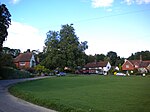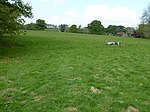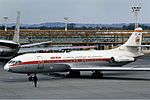Perry Copse Outcrop
Geological Conservation Review sitesSites of Special Scientific Interest in West Sussex

Perry Copse Outcrop is a 0.2-hectare (0.49-acre) geological Site of Special Scientific Interest in Fernhurst in West Sussex. It is a Geological Conservation Review site.This site dates to the Early Cretaceous, between 140 and 100 million years ago. The steep banks of a stream expose a 5-metre (16-foot) high section of the Netherside Sand Member, part of the Weald Clay Group. There are 1 metre (3.3 feet) high fossils of Lycopodites in upright position.The site is private land with no public access.
Excerpt from the Wikipedia article Perry Copse Outcrop (License: CC BY-SA 3.0, Authors, Images).Perry Copse Outcrop
Vann Road, Chichester
Geographical coordinates (GPS) Address Nearby Places Show on map
Geographical coordinates (GPS)
| Latitude | Longitude |
|---|---|
| N 51.051 ° | E -0.73 ° |
Address
Vann Road
Vann Road
GU27 3NP Chichester
England, United Kingdom
Open on Google Maps







